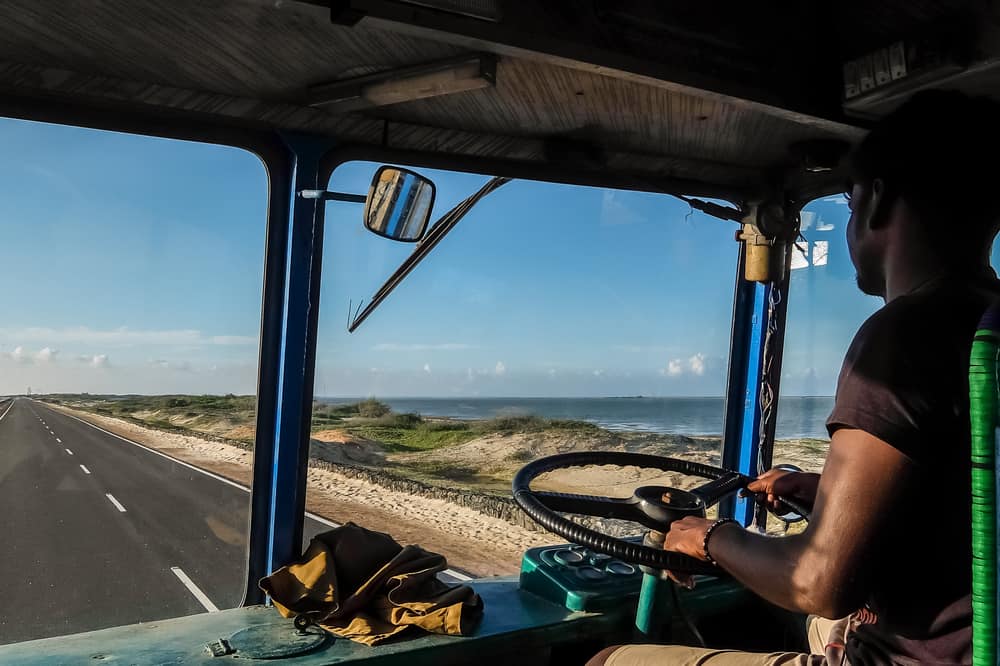
In a way, the economic growth of a country falls squarely on the shoulders of its transportation industry, as it is the winding highways and a robust logistics system that expedites movement of freight, and ergo, the idea of consumerism. The proportion of the freight industry across the developed West to that of the nation’s overall GDP has typically hovered in the single digit figures – for instance, the logistics & transportation industry totaled $1.4 trillion in 2016, placing it around 7.5% of the U.S. GDP.
However, this is not the case with most of the developing countries as they face stiff challenges with regard to inadequate infrastructure, lethargic governance, stifled technology adoption, and a general inefficiency in hauling equipment. This leads to an inadvertent increase in the transportation spend of the country, with India for instance, coughing up nearly 14% of its GDP on logistics costs.
FreightWaves caught up with Sandeep Kar, chief strategy officer at Fleet Complete, to discuss the issues that ail the Indian freight market, and the circumstances that stymie efficiency within the industry.
“When we talk about the logistics market in India, there is a huge legacy that needs to be understood. Unlike the U.S. where 70% of the freight is moved by trucks, in India it has been substantially lower because it has an active rail freight network. But the trend is changing, and we see a lot more freight moving on trucks than in the past. Now we need to see how we could expedite that growth,” he said.
India suffers from a historically volatile and comparatively high diesel rate, which plays a meaty role in the total cost of operations (TCO) of fleets, cutting into their already meager profit margins. For reference, the rate per gallon of diesel in India is around $4, making costs nearly 30% higher than in the U.S.
Apart from the high diesel expenses, one of the primary reasons for a higher proportion of the GDP percolating into logistics costs lies in the overt banking of Indian fleets over legacy equipment. “If you drive through any highway in India, you would see trucks that are heavily loaded to more than its capacity, that leads to a capital loss in the trucking business which gets tracked into the costs,” said Kar. “These trucks are supremely fuel inefficient compared to the Western trucks, since their powertrain technology is not state-of-the-art and consume a lot of fuel in a market where fuel is highly expensive.”
Moving from the trucks themselves to the highways they ply in, India has been attuned to the problem of heterogeneous and chaotic traffic on its roads, with heavily congested cities an ungainly spectacle across the country. “The highways are not optimized and have a lot of stop-and-go traffic, that hits on the fuel efficiency of the trucks which would be at its peak when the vehicle operates in the 80-120 kmph bandwidth,” said Kar. “But with the trucks burning fuel at the worst possible speed bandwidth of 0-60 kmph, the efficiency takes a huge hit.”
Kar also spoke about the problem of India growing on the back of a service-based economy, rather than aligning itself to be a manufacturing bulwark like in the case of China or Germany. “In a manufacturing based society, the economic benefit goes to the lowest strata of the society. And once that happens, it creates the need for better infrastructure and better transportation networks as you would be selling what you manufactured across the country and other parts of the world, which would be in the best interest of the nation,” he said. “But India is not that economy yet, and there are bottlenecks that policymakers have not started to take seriously which is stifling economic growth and transportation infrastructure.”
That aside, there has been no visible momentum from the truck OEMs in India towards energizing the industry, which Kar termed to be a “truck-as-a-product” approach rather than treating the truck-as-a-service, which is the standard in the West. “The slow speed of OEMs in India needs to change. OEMs are coming in and bringing change in the West, while in India, the OEMs are just about getting started and are unsure if they need to be involved in driving change in a market that is still run by legacy businesses,” he said.
All that being said, India is not unique amongst the developing countries to face issues that debilitate the transportation industry, but rather is the norm. Countries across the world including the developed ones, did go through the arc of having an oversized budget for logistics, which tapered down as the country focussed on improving its infrastructure, stuck out regulations, bolstered its manufacturing capabilities, and inculcated the spirit of looking at trucks as a service, rather than as a product.










